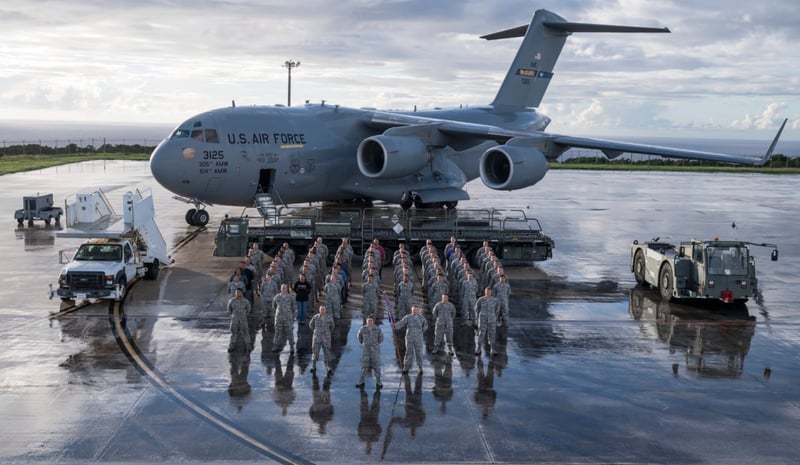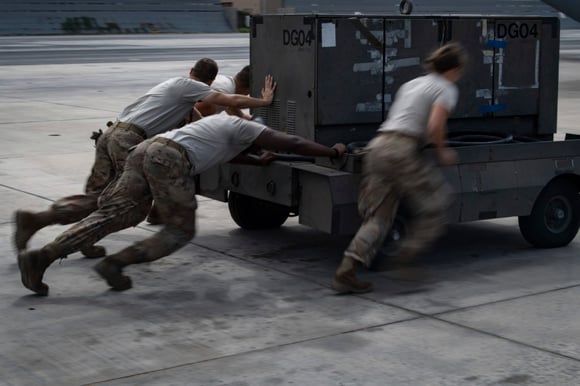
“As an Airman, you enter the force accepting that you may get hurt. Jumping out of a plane and carrying heavy equipment will always be hard on the body. How quickly you can recover and get back in the fight is more important.” - CMsgt. Jeremy Mullins Tweet
Special Warfare Airmen are the critical ground link between air assets and ground forces. They are trained to solve complex problems with air, space, and cyber power, and they perform missions in the areas of Strike, Access, and Recovery. Their skillset is unique—they embed conventional and special operations units and must be thoroughly proficient in their specialty and experts on airpower and joint operations, while also possessing the skills and training necessary to seamlessly fit in with the joint service unit to which they are assigned. Members are required to meet a higher physical standard in order to ensure their readiness for, and sustainability of their missions. To improve retention rates and help their squadrons safely adapt to the higher physical standards, leadership sought ways to improve the health of their members.
When Chief Master Sergeant Mullins began the search for a smarter way to approach injury prevention, he needed a way to individualize their assessments and training. His squadron faced an added complication: due to the pandemic, members were located in different areas across the country. Through conversations with his active duty counterparts, CMSgt. Mullins discovered Sparta Science. After an in-person demonstration from the Sparta Science team, CMSgt. Mullins witnessed the benefits of Sparta’s Force Plate Machine Learning™. With Sparta Science, all team members would be able to train together and track their progress, despite being in different places. “For a long time, the mentality has been ‘suck it up and keep moving,’” said CMSgt. Mullins, “so we were trying to find a smarter way to get after it.” To CMSgt. Mullins, Sparta Science was the most viable option for optimal results in his squadron.

When the squadron initially received the Sparta Movement Health Platform (SMHP), CMSgt. Mullins was only able to train a small portion of his team, as many were actively deployed. To start, all members scanned using Sparta Science’s assessment app, Sparta Scan, so that they had objective data relating to their current movement strategies and vulnerabilities. From there, they could take their newly assigned exercise prescription home to address any weaknesses. The Balance, Jump, and Plank Scans provided detailed data around individual member’s movement strategy, strengths and weaknesses, and potential injury risk. Scans were completed on a weekly, monthly, or quarterly basis to track progress and make movement plan adjustments.
Sparta Science’s program was essential to tracking the acute changes while also empowering squad members to adjust their personal training with insights into their own physicalities. Although the squadron scanned together, individuals were responsible for training themselves. Sparta Science provided the necessary data to ensure Airmen understood not only how to train but also why they needed to train a certain way. The Airmen focused on their identified areas of weakness to improve overall movement efficiency and reduce negative impact on joints, ultimately reducing injuries.
The exercises prescribed by the Sparta Movement Health Platform were easy for the squadron to integrate into their workouts because they didn’t replace any movements, only added to them. CMSgt. Mullins also noticed a sense of friendly competition among the squadron when they scanned together.
“Someone would scan and get a great score and the other guys would want to get back on the plate right then and there to see if they could beat it,” said CMSgt. Mullins. “When they were all around, it was definitely a competition.” Tweet
Before integrating The Sparta Movement Health Platform, the team trained often, but without an understanding of each individual’s unique injury risks and recovery needs. When they were injured, Airmen often tried to rush their recovery to return to action, which can exacerbate an injury. With the implementation of the SMHP, Airmen had a specific plan that not only allowed them to handle the demands of their job but also mitigated the risk of those common injuries—ultimately making them more operational athletes.
For example, Sparta’s Balance Scan can help to identify traumatic brain injury (TBI), if tested early enough. If an individual hits their head during training, leaders used the balance test results to determine whether or not it was safe for that individual to participate in future scheduled jumps. In the past, this individual would most likely ignore the hit and continue jumping. With Sparta Science’s technology in hand, CMSgt. Mullins felt confident that his team was safe and in the best health possible.
Airmen are held to the highest physical standards and it is paramount that they stay healthy. With Sparta Science, CMSgt. Mullins had access to a tool that curated individual exercise prescriptions, backed by data, for each squadron member—allowing them to meet the physical requirements of the job and mitigating future risk of injuries. The Sparta Movement Health Platform easily integrated into members’ fitness regimens and provided a system of accountability. “As an Airman, you enter the force accepting that you may get hurt. Jumping out of a plane and carrying heavy equipment will always be hard on the body,” says MSgt. Mullins, “how quickly you can recover and get back in the fight is more important.”